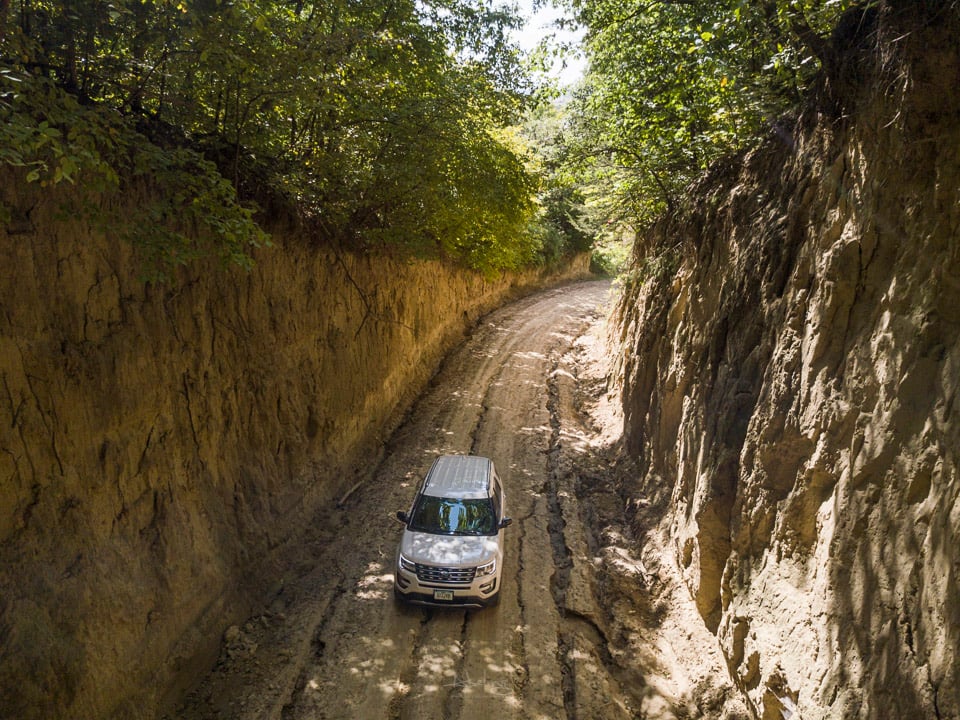What are level B roads and how do you find the best ones in Iowa?

What is a level B road?
Basically, it’s a dirt road that receives very little maintenance. Each county gets to designate nonpaved roads as Level A, B, or C. This came about during the late 1970s and early 1980s when a state law enabled each county to designate lesser-used roads to receive less maintenance.
- Level A is your standard gravel road that leads to a family home and receives standard maintenance including grading and snow plowing.
- Level B roads typically do not lead to family homes, but they may provide access between other gravel roads or to farm fields. Level B roads receive minimal maintenance and are not plowed in the winter – however, level B roads are still open for the public to travel.
- Level C roads receive no maintenance at all – and are NOT open to the public.
Are level B roads found all across Iowa?
Yes, I believe all 99 counties have at least a few level B designated roads.
Where do I find maps of the level B roads?
- Step 1: Visit: https://iowadot.gov/maps/digital-maps/city-and-county-maps
- Step 2: Click on the desired county
- Step 3: Click on CITY AND COUNTY MAPS
- Step 4: Click on COLOR MAP
- Step 5: A pdf color map of the county will display next – and you are looking for the green colored roads, labeled as EARTHEN ROADS, which are also level B roads.
I have the maps, but how do I find the BEST level B roads in Iowa?
Finding the best level B roads means finding the best soil types that can produce tall sidewalls and curving paths – and the best soil type for this is the Loess Hills area of Western Iowa, found predominantly on the western edge of Woodbury, Monona, Harrison, Mills, and Fremont counties.
Here’s an example, this is the map for Harrison County. If you look closely at the map, there’s an area where the roads are jagged and turn frequently – and there’s also an area where the roads are straight and typically form squares. The straight roads are typically used in flat-lying areas and those with jagged turns usually routes through the hills. Explore the roads in the hills. You can also check out the list of My favorite level B Loess Hills Roads

Do you need a four-wheel drive for level B roads?
No. In fact, I’ve driven on many level B roads with just a Hyundai Sonata, as well as a Santa Fe, Toyota Sienna, and a Ford Explorer (that wasn’t in 4 wheel drive). The most important factor is whether it has recently rained or not. Considering that this road doesn’t get much maintenance, it can easily deteriorate with heavy rain.
How can I find out the condition of the road prior to going?
Sorry, there is no place to call or check online for the status of the level B roads. As the sign at the entrance states, it is “enter at your own risk”. As a general rule of thumb, you do NOT want to visit after heavy rain.
If there are level B roads in every county in Iowa – do all of them look like this?
It’s true that every county in Iowa has level B roads, but the backroads of the Loess Hills are truly unique due to the soil type. The loess soil is a fine grain, powdery soil that accumulated over time due to the wind. In fact, there are only two places in the world with this type of soil: one location in China and the other in Western Iowa. It’s this unique type of soil that doesn’t really collapse after each rain.
If the sidewall doesn’t collapse after heavy rain, then why do not advise traveling on it after rain?
After heavy rain, the main concern is the floor of the road, which is typically washed out and will contain large ruts.






I do not think your statement about there not being homes on/off Level B is true.
I say this from recall of conversations with the county and my personal experience.
I just spent 25 years in a house at the end of a Level B. A few months ago, I parceled off the residential buildings and a new owner lives at the dead end of the Level B. Access to my remaining parcel is off the Level B before their residence.
They said they typically do not lead to… not that they never do.